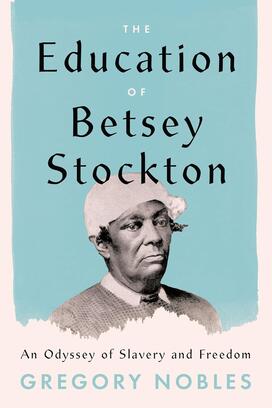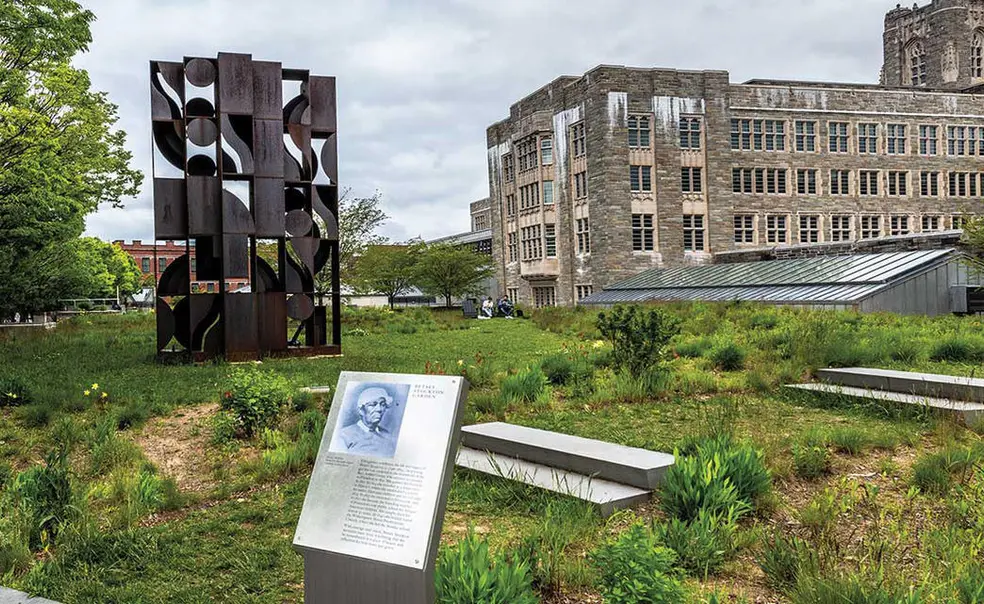New Papers Highlight Ashbel Green 1783 and Betsey Stockton’s Relationship
The Princeton University Library has received a donation of documents revealing new insights about Ashbel Green 1783, a Princeton valedictorian who served as the University’s eighth president from 1812 to 1822, and his circle. Donor Rebecca Holt Fine, the fourth great-granddaughter of Green, delivered the manuscripts to Firestone Library in March. These materials include letters to and from Green, correspondence relating to Green’s term as college president, and papers of Green’s descendants — including Princeton trustees and law scholars — as well as letters handwritten by Betsey Stockton, who was owned as a slave by Green and later freed.
Stockton, whose story was largely untold until recent years, had a rich connection to the University and the town of Princeton, where she became a prominent educator for the Black community on Witherspoon Street. “There’s not much in her own hand, written by her,” says Gregory Nobles ’70, professor emeritus of history at Georgia Institute of Technology and author of the biography The Education of Betsey Stockton. “It became a work of detective labor to track down what I could, and that’s why this new batch of papers is such an astounding addition.” The hundreds of Green family materials supplement the University’s existing Ashbel Green collection, which Nobles used extensively in his research.

The new donation underscores the close relationship between Stockton and Green. Stockton was given as a slave to Green’s first wife, Elizabeth Stockton, and Green maintained oversight until he freed Stockton in her late teenage years. After saving her wages, Stockton sailed from New Haven, Connecticut, to the Sandwich Islands (present-day Hawaii) as a missionary — becoming the first Black woman from the U.S. and first formerly enslaved woman to do so. Despite being free and across the Pacific in Lahaina, Maui, Stockton remained linked socially to Green. Two letters to him in the new collection, dated 1825, were written by Stockton during this two-year missionary period.
But documents by Green piqued Nobles’ attention most, reshaping his views about Green’s complex, often equivocal relationship to slavery. “He has an enslaved woman and young enslaved child living in his house. He’s uncomfortable with slavery, and yet he seems to accommodate it,” Nobles says. By contrast, a July 14, 1805, manumission document in the new collection casts slaveholding as a “moral evil” — a discovery Nobles calls “the strongest statement I’ve seen from Ashbel Green about his opposition to slavery.” Referring to his desire to free a slave named George from the Stockton family estate, Green wrote that “on deep and long conviction” he “resolved never to hold a slave.”
That comment has led Nobles to consider how he would revise his biography of Stockton. “I didn’t always give [Green] credit for being sufficiently opposed to slavery,” Nobles says. In 1815, Green wrote to his third wife about “old slave” Phoebe and when she might be emancipated. In 1823, he signed as a witness for the emancipation of an enslaved woman named Sally. “At various points, I’m critical of Green and his positions on slavery,” says Nobles, noting that Green continued a tradition of slave ownership by Princeton’s leaders (the first nine presidents of the College of New Jersey owned slaves). “That criticism wouldn’t altogether go away if I were writing the book now, but I think it might be somewhat modified,” he says.
Other materials in the donation include around 60 letters between Elizabeth Stockton and Ashbel Green before and during the yellow fever epidemic in the 1790s, and papers highlighting the construction of Princeton’s theological school. In a letter postmarked Sept. 28, 1815, Green discusses the laying of the cornerstone of the Princeton Theological Seminary as “the greatest honor” of his life.
The documents were preserved by Beverly Jean Swanson Green (1919–84), who married Holt Fine’s grandfather in 1946, when Holt Fine’s mother was 13. In 1957, Beverly Green began organizing family papers and heirlooms and relocating them to public institutions. While she donated many of the items — among them, gifts from George Washington and a portrait of Ashbel Green — to the Daughters of the American Revolution (DAR), Beverly kept more personal materials for their family significance, such as the private letters between Green and his three wives. Still, correspondence from Beverly shows that she contacted Princeton, Yale, the First Presbyterian Church of Hanover, the Historical Society of New Jersey, and the DAR to understand how to appraise, preserve, and eventually donate the collection, Holt Fine says. That included typing a transcription of Ashbel Green’s diaries. To preserve their contents in the humid environment of Florida, Beverly converted Green’s shorthand into 4,000 pages of full text.

Geoffrey Stockton Green (the son of Beverly Green) sold the typed diaries to Princeton in 1989, but the remaining documents circulated in the Green family’s possession. Beverly’s granddaughter, Lori Green, entrusted the materials to Holt Fine in 2022 for donation. Spotting a letter from Betsey Stockton and researching her impact — overseas and in Princeton — was a turning point. Holt Fine recognized that these letters would “serve a greater purpose than just being in my family,” she says. That was particularly clear when she realized that Nobles’ book was published the same year that she received the documents. “This is current,” she says.
Holt Fine invited Nobles twice to her home in Nyack, New York, to see the collection. He explained the significance of the letters to historians and to the public. “The prevalence and the acceptance of slavery in the North and at Princeton in particular is a story that people need to know,” Nobles says. “Green is involved in the world of slavery as both a reluctant participant and a growing opponent,” he adds. “And yet it’s through Ashbel Green we can see the patterns of slaveholding in Princeton in the early part of the 19th century” (in 1822, even as Stockton left for Hawaii, Green referred to her in his diary with the possessive “my coloured woman”).
While Green remains a complicated figure in the University’s antebellum past, Betsey Stockton’s identity as an independent female teacher, supporting equal education locally and abroad, is certain. “These materials provide new documentary evidence to Betsey’s missionary travels that will also supplement the deep research that was conducted during the Princeton and Slavery Project,” says Gabriel Swift, the librarian for early American collections in the University Special Collections. The project, housed online, explored the institution of slavery among Princeton’s early trustees and faculty, University fortune built from slave labor or slave trade, and campus dynamics of politics and race. It includes profiles of Green and Stockton.
According to Nobles and Holt Fine, researchers would be well positioned to write a biography of Green, which is yet to be done. The new material will be open to scholars following the archival description by Special Collections. Several of the most significant additions will be digitized to provide global access.












1 Response
Shirley A. Satterfield
4 Months AgoBetsey Stockton’s Impact in Princeton
I read the article, “New Papers Highlight Ashbel Green 1783 and Betsey Stockton’s Relationship,” sent to me by Gregory Nobles ’70. I am the president of the Witherspoon-Jackson Historical and Cultural Society, a nonprofit whose mission is to research, preserve, share the rich history of African Americans in Princeton. I have researched and given the history of Elizabeth “Betsey” Stockton, visited her grave site in Cooperstown, New York, and written a brief history for the NJ Historical Society’s trail of Noted New Jersey Women that is on the plaque in front of Witherspoon Street Presbyterian Church. She started a Sabbath School at this church; there is a plaque of her life in our sanctuary and a stained glass window given by her scholars. She was our first teacher for the Colored children.
I welcome a talk with Ms. Rachel Brooks regarding her article.